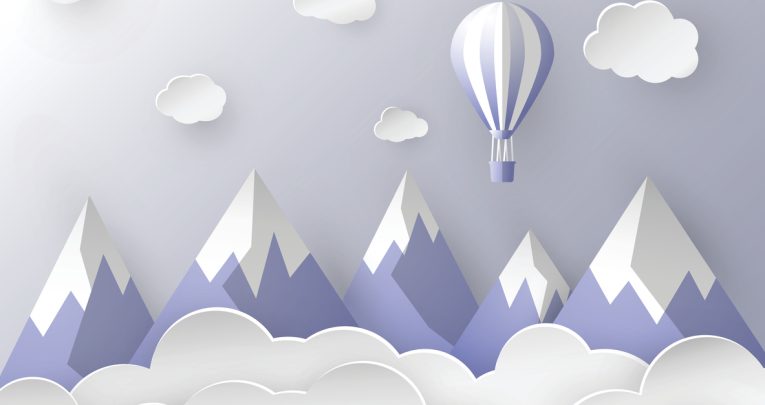Lesson observation – An ECT’s survival guide

You can’t hide from them, so here’s how to tackle them successfully

- by Steph Caswell
- Coach, author and former deputy headteacher Visit website

Let’s be honest, shall we? You’d rather face the 8,000m climb to the top of Everest than undergo a lesson observation. Bring on the potential frostbite, snow blindness and avalanches – they seem a less terrifying alternative to feedback from your headteacher.
But observations are part of the job. You may crawl under your desk wishing you’d chosen a different career, but you have to do them.
Like Sir Edmund Hillary in 1953, you don’t want to tackle the challenge ahead unprepared. You need a plan for every stage of the journey.
If you follow that plan, the observation has more chance of success.
Journey to base camp
The journey to Everest’s base camp takes ten days. You too must start preparing for your observation about ten days in advance to be well prepared.
Look back at notes from previous observations. What were your areas for development? What strategies have you been working on? How you are going to show your own professional progression?
In the week preceding your observation, plan the lesson. If you have a year group partner, plan it together so you can talk through everything from differentiation and progress to resources and TA deployment. If you’re on your own, grab a few minutes with your NQT mentor.
Arrival at base camp
Climbers have six weeks to acclimatise to the conditions at Everest’s base camp. Unfortunately you only have 24 hours. The day before your observation is a chance to work on several strategies.
Firstly, be organised. Is it me or do photocopiers sense stress? You’re desperate to get resources copied before the bell goes, but the dreaded paper jam light keeps flashing. You curse the god of photocopying for his evil ways.
It’s even worse when the flashing light of doom appears on observation day. To avoid this headache, have your resources and lesson prepped the night before.
Set up your classroom too, if possible. Being organised will calm your nerves and ensure clarity.
During the lesson, children shouldn’t wander around the classroom looking for a pencil or a pair of scissors. It takes them away from their learning. Put the pot of scissors in the middle of the table, sharpen all pencils and ensure all books are marked.
Secondly, keep it simple. An observation requires you to be your best teaching self. It doesn’t require you to dress up as a wizard, a chef or the Gruffalo.
Avoid disaster by keeping things simple. If you’re constantly worrying about where you left your magic wand, things can go from bad to worse.
Focus on the children’s progress and leave the Cruella de Vil outfit for another day; we won’t judge what you do on the weekends.
Finally, avoid drama. There aren’t many teachers who love a lesson observation. Even the most experienced can become highly emotional, racing around trying to find batteries before their science lesson.
Don’t get drawn in. Some people just love drama. See your observation as a learning opportunity and show the observer what you do best.
The ascent
It takes nine days to reach the summit of Everest – nine days of exhaustion, dehydration and battling with the elements.
At the start of your lesson you’re the mountaineer; the children are your sherpas. They are leading the learning. You may have planned a brilliant lesson, but the children will be your guides as to whether that lesson is executed in the way you intended.
To get to the summit, you need to keep your pace up, asking differentiated questions to ascertain understanding. Give the children time limits for all activities and keep your initial input to ten minutes. Any more than that and your sherpas will lose their way.
If, during your trek, you realise that your sherpas are unable to follow your plan, stop. Don’t carry on regardless. Don’t assume that they’ll ‘pick it up in the end.’ Go back and address misconceptions right there and then.
A good teacher will realise that the path to the summit may need a dramatic deviation to avoid potential avalanches. Stay in control of their learning and progress will follow.
The summit
Reaching the top of Everest is one of the greatest achievements of humankind. Men and women stand proudly at its peak, their flags in the snow.
The summit of your lesson shows children making progress. An observer will be able to spot it as they walk around the room, looking at children’s work and talking to them about their learning. But you can also make progress explicitly obvious to them.
Using a mini plenary idea can work well to signpost progress and give children instant feedback. Use it to give a good example of progress that’s been made. Either ask the child to show how they’ve applied a specific concept or give the example yourself.
The descent
The lesson is over, the hard work is done. Much like a climber descending Everest, there’s a sense of relief that you’ve achieved what you set out to do. But it’s not over yet. There are still potential hazards ahead.
Feedback is often the part of an observation that teachers fear most. However it all comes down to how you embrace it. If you went into the observation expecting perfection as the result, you’ll be sorely disappointed.
If, however, you listen to feedback with an open mind, a reflective attitude and a willingness to learn, you’ll find the process a lot less stressful and a lot more purposeful. It really is down to you.
Recovery
As with anything that’s emotionally and physically exhausting, you need to give yourself time to recover.
If the lesson didn’t go as well as you’d hoped, reflect on it but then let it go. You’ll have opportunities to put it right. Every teacher has bad days and this just may have been yours. Don’t give up! Seek support if you need it and embrace the learning journey ahead of you.
And just think, at the end of an observation day you can go home, put your feet up and grab a pizza. Edmund Hillary conquered Everest and all he was offered as he descended into base camp was a mug of soup.










